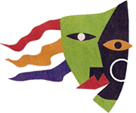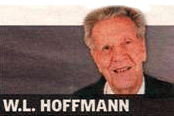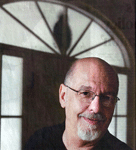The final weekend of the National Multicultural Festival 2008 brings an Australian Premiere presentation of Maria de Buenos Aires – TangOpera, a famous “tango operita” written by celebrated Argentinean composer Astor Piazolla and Horacio Ferrer. The first opera to use tango forms, Maria de Buenos Aires premiered at the Sala Planeta in Buenos Aires in May 1968 and is constructed as a series of dances. Written for at least three vocalists (one of whom, the narrator, speaks his part) it draws on mythical and biblical imagery, inspired by the streets of Latin America. TangOpera is brought to life by Artistic Director Jorge Bagnini and Musical Director Marcela Fiorillo, an accomplished Argentinean husband-and-wife team based in Canberra. Argentinean actor Alejandro Machuron will play the Goblin, with Canberran soprano and rising star Bronwyn Sullivan in the title role. Argentinean opera star and recording artist, baritone Eduardo Cogorno lends his formidable credentials to a superb cast of local and imported talents. Musicians: Marcela Fiorillo (piano), Julian Smiles (cello), Dimity Hall (violin), Max Mc Bride (double bass), Virginia Taylor (flute), Mary Broughton (percussion).
"Baritone sings with the voice of tango" |
 |
By Ron Cerabona
If you are putting on the Austrcilian premiere of an opera by the Argentine composer Astor Piazzolla, you probably couldn't have a better star than Eduardo Cogorno. The baritone, who has flown to Canberra specifically to play multiple roles in Maria de Buenos Aires, had a long association with the composer, a fellow Argentine, from early in his singing career . "I met him in 19 70," he said, "and in 1975 sang some of the Piazzolla songs... he wrote a letter to me praising the performance." |
|
Over the ensuing decades, Cogorno sang in operas, recitals and oratorios in Argentina, the US and Europe by various composers, including Piazzolla, who died in 1992, but never in Maria de Buenos Aires. "It's my first time in Australia, "Cogorno said. "This is the premiere here for the opera and for me." The artistic director of the production, Jorge Bagnini, said, "It 's a really complex piece of music for the singers and the musicians."
The 1968 opera Maria de Buenos Aires features seven musicians, a choral group of eight, two singers, and a narrator, and is, Bagnini said, "a homage by Piazzolla to the full beauty of the city... in the 1500s it was founded by the Spaniards who named it, in English, 'Saint Mary of the Good Airs'. "Bagnini said the opera represented the city, metaphorically, as a woman, and employed different dance styles, notably the tango, for which Piazzolla was famous. The production is being sponsored in the National Multicultural Festival by the embassy of Argentina, the Council on Australia and Latin America Relations, Caltex, La Scala Restaurant and Selectv. Maria de Buenos Aires will be performed at The Playhouse, Canberra Theatre Centre on February 15 and 16 at 8pm. Tickets cost $38/$34. For bookings, call Canberra Ticketing on 6275 2 700. |
|
|
|
| "Gripping intensity in fascinating fusion" |
 |
A unique music-theatre feature of the National Multicultural Festival was the premiere Australian staging of this major work by internationally acclaimed Argentine born composer Astor Piazzolla. After studying in New York and Paris in the mid 1950s Piazzolla returned to Buenos Aires and forged his distinctive compositional style which is a fascinating fusion of contemporary classical forms with popular jazz and cabaret elements and Latin American rhythms. Now, 17 years after his death, he is recognised as one of the significant figures of 20th century music. |
|
Maria de Buenos Aires was first performed in 1968, and is a setting Maria de Buenos Aires. A Tango Operita by Astor Piazzolla. Presented by Latin America Live. The Playhouse. February 1 5 - 1 6. National Multicultural Festival. In two acts and 17 scenes of a libretto by Argentine poet Horacio Ferrer. This libretto is a mixture of irreverent images, and its sometimes absurd and often satirical elements are taken from folk tales, Bible stories, and popular fables. These literary elements are powerfully underlined by Piazzolla's rhythmically impelled and distinctively eclectic musical score. This performance was in the original language, but artistic director Jorge Bagnini had assisted the audience understanding of the action by the use of a curtain before each scene on to which was projected a brief summary of the action to follow. It is scored for a narrator and two soloists, supported by a chorus, a solo piano, and an instrumental ensemble of violin, flute, cello and double bass, with two percussionists. Canberra singer Bronwyn Sullivan provided a powerfully projected realisation of the central role of Maria in a performance that was a vocal tour de force, conveying with assurance the special expressive qualities that the role calls for. She was strongly supported by Argentine baritone Eduardo Cogorno as the voices of other characters, and the spoken narrations by Alejandro Machuron were beautifully nuanced to match the cadences of the music. The performance was directed from the piano by Marcela Fiorillo who obtained brilliantly idiomatic playing from the accompanying instrumentalists, and the declamations from the chorus of nine voices brought another tonal coloration to the vitality of the score. It was, in total, a performance of gripping intensity, a highly memorable realisation of this powerful Argentine music-theatre work. |
|


